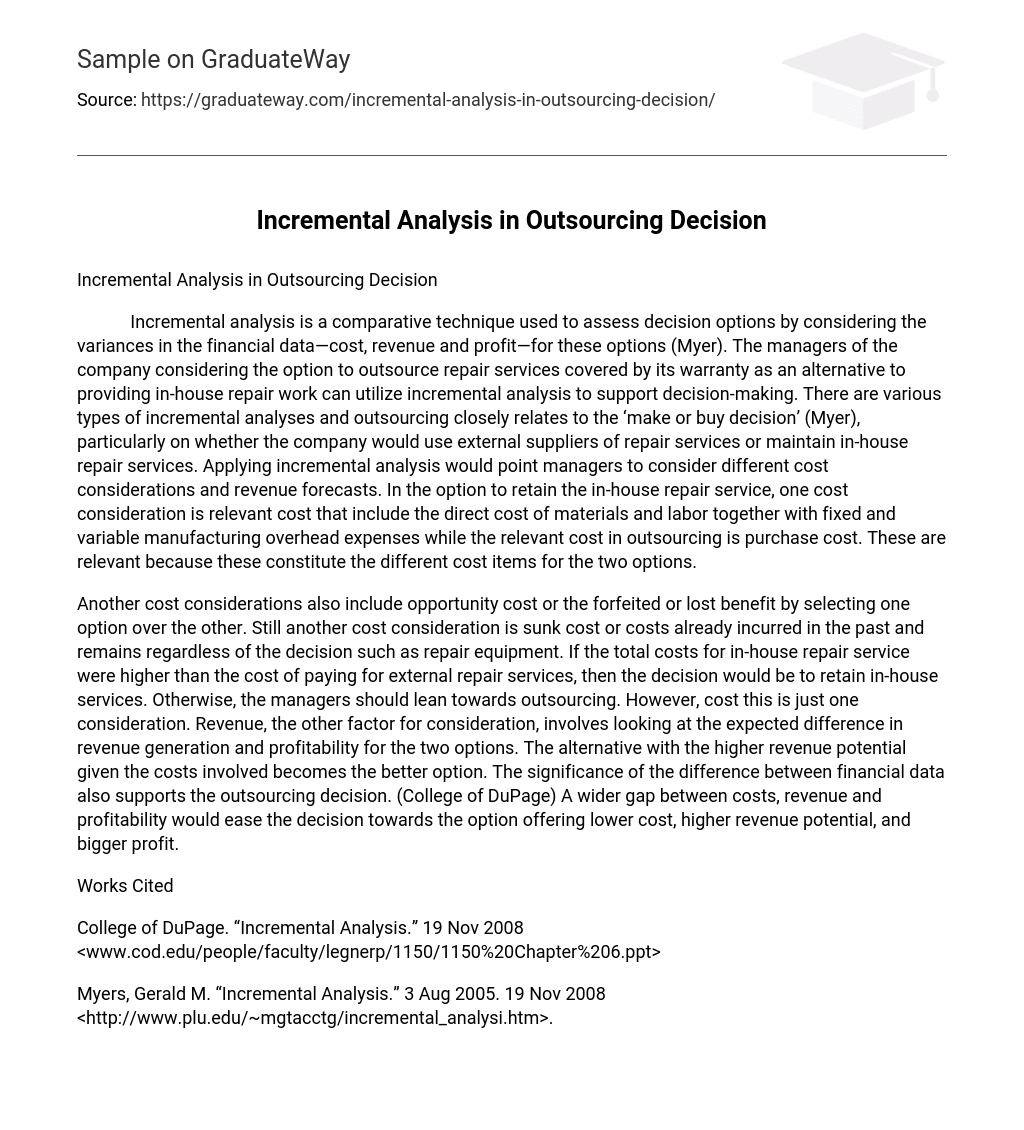Incremental analysis is a comparative technique used to assess decision options by considering the variances in the financial data—cost, revenue and profit—for these options (Myer). The managers of the company considering the option to outsource repair services covered by its warranty as an alternative to providing in-house repair work can utilize incremental analysis to support decision-making. There are various types of incremental analyses and outsourcing closely relates to the ‘make or buy decision’ (Myer), particularly on whether the company would use external suppliers of repair services or maintain in-house repair services. Applying incremental analysis would point managers to consider different cost considerations and revenue forecasts. In the option to retain the in-house repair service, one cost consideration is relevant cost that include the direct cost of materials and labor together with fixed and variable manufacturing overhead expenses while the relevant cost in outsourcing is purchase cost. These are relevant because these constitute the different cost items for the two options.
Another cost considerations also include opportunity cost or the forfeited or lost benefit by selecting one option over the other. Still another cost consideration is sunk cost or costs already incurred in the past and remains regardless of the decision such as repair equipment. If the total costs for in-house repair service were higher than the cost of paying for external repair services, then the decision would be to retain in-house services. Otherwise, the managers should lean towards outsourcing. However, cost this is just one consideration. Revenue, the other factor for consideration, involves looking at the expected difference in revenue generation and profitability for the two options. The alternative with the higher revenue potential given the costs involved becomes the better option. The significance of the difference between financial data also supports the outsourcing decision. (College of DuPage) A wider gap between costs, revenue and profitability would ease the decision towards the option offering lower cost, higher revenue potential, and bigger profit.
Works Cited
College of DuPage. “Incremental Analysis.” 19 Nov 2008 <www.cod.edu/people/faculty/legnerp/1150/1150%20Chapter%206.ppt>
Myers, Gerald M. “Incremental Analysis.” 3 Aug 2005. 19 Nov 2008 <http://www.plu.edu/~mgtacctg/incremental_analysi.htm>.





